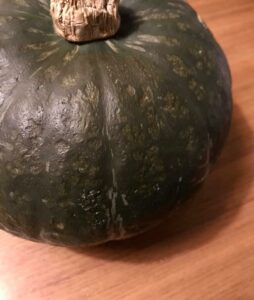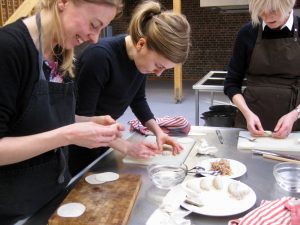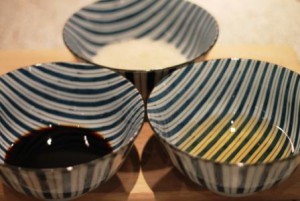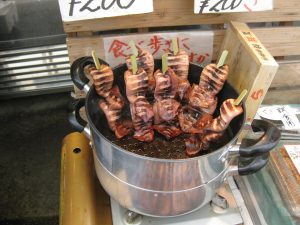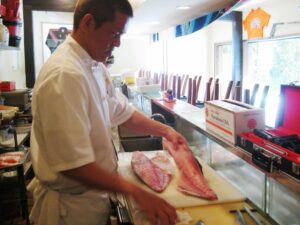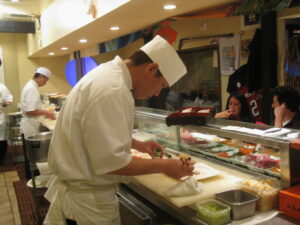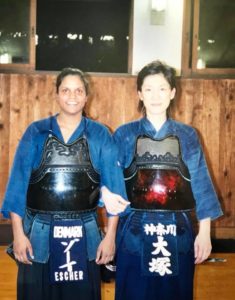In recent years, pumpkins have become more and more popular.
Halloween is an American tradition which a number of years ago found its way to Denmark. Cutting orange pumpkins has gradually also becomes a tradition in Denmark.
Because of Halloween, more and more people want to eat pumpkins. Today there are many different kinds of pumpkins and have found their way to the Danish supermarkets.
Most people are familiar with the orange pumpkin called Hokkaido, which is available in all supermarkets. It was once cultivated in Japan, from which the name originates. Today it is grown outside Japan.
This dark green pumpkin which I got know when travelling in Japan, is available in Denmark, but only at few supermarket.
It’s called Kabocha.
In Japan, it is eaten in many different ways in traditional Japanese cuisine.
I tasted it for the first time in Japan in 2004. I got it for lunch where there was a piece in a bento box. I also ate it in the evening at the home of one of my teachers in Tokyo.
It is a pumpkin type that I have learned to like a lot the Japanese way.
Read more about Japanese noodle soup course for beginners, where noodle soups are made with Japanese ingredients and ingredients in the same way as, Japanese restaurants in Tokyo.
_
Zoë has lectured and held sushi courses for A. P. Moller – Maersk, Hugo Boss Nordic, Novo Nordisk, Novartis, Velux, Gorrissen Federspiel, Beierholm revision, Elbek & Vejrup and many more.

